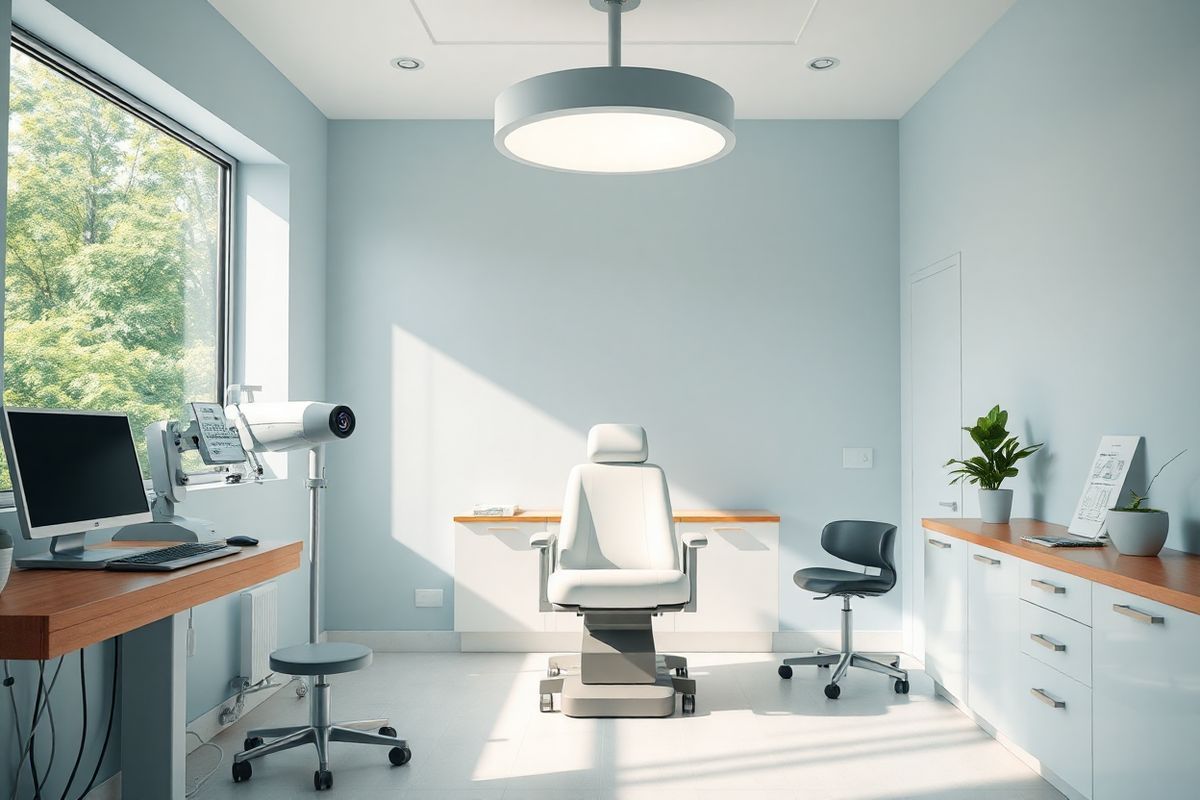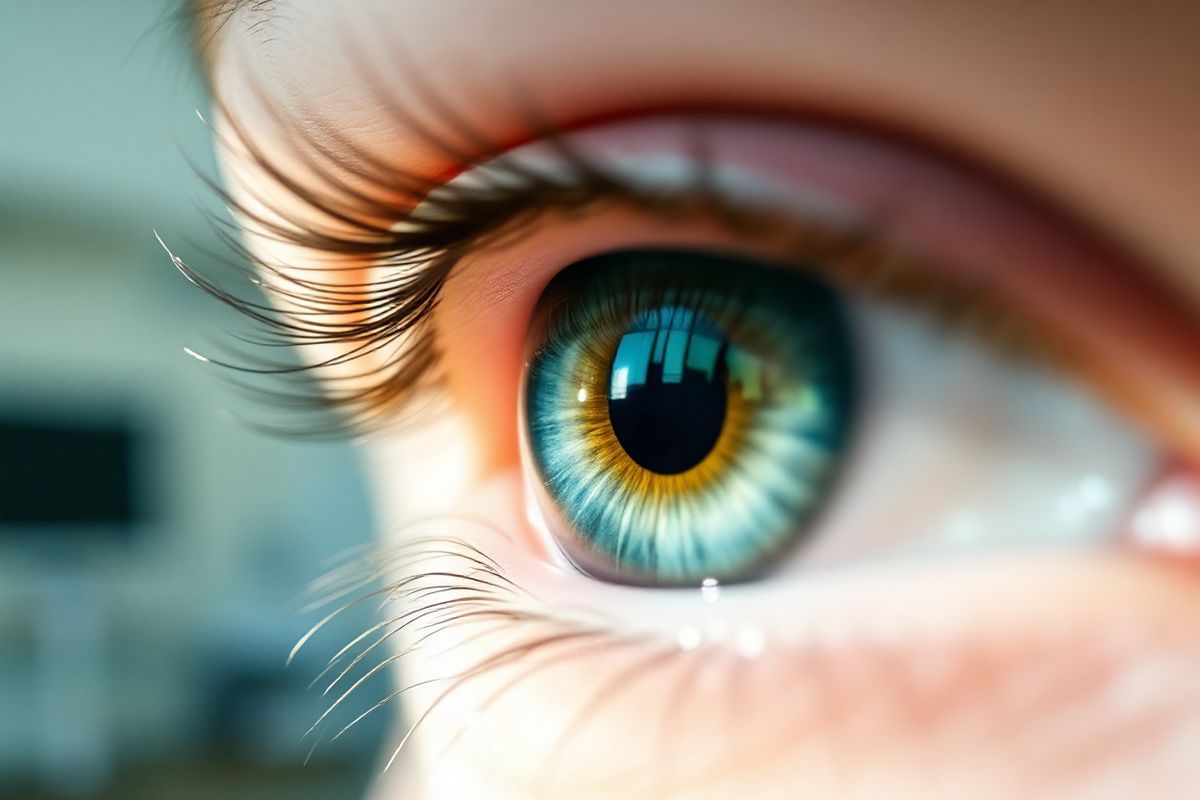Table of Contents
Exploring Conductive Keratoplasty: A Vision Correction Alternative

Conductive keratoplasty (CK) is a promising vision correction option primarily aimed at individuals suffering from mild to moderate farsightedness, also known as hyperopia. This procedure involves the application of radiofrequency energy to the cornea, which strategically reshapes its curvature by shrinking collagen fibers within the corneal stroma. Unlike more invasive options such as laser eye surgeries, CK is classified as a minimally invasive procedure, making it an appealing alternative for patients who prefer less risky and quicker recovery options (Healthline, 2024).
Generally, CK is recommended for patients who are at least 40 years old, have stable vision for at least one year, and do not suffer from any significant eye health issues. Before the procedure, patients undergo a thorough eye examination, including corneal topography, to create an accurate map of the eye’s surface. This mapping is crucial for the precise application of radiofrequency energy, ensuring the best possible outcomes for vision correction (Healthline, 2024).
The procedure itself is often performed in an outpatient setting and typically takes less than five minutes per eye. Patients can expect minimal discomfort during the process, as topical anesthetic drops are applied beforehand. Post-operative care includes the use of antibiotic eye drops to prevent infection and the use of lubricating eye drops to reduce discomfort. Most patients can resume normal activities within a few days, though some precautions are necessary (Better Vision Guide, 2024).
The Mechanism Behind Corneal Scarring: Causes and Risk Factors

Corneal scarring can occur as a result of various factors, including surgical interventions like CK. Scarring may arise due to the body’s healing response to injury, which can lead to the formation of opaque tissue within the cornea. This condition, often referred to as corneal haze, can significantly impair vision if it becomes severe (Cleveland Clinic, 2024).
Several key factors contribute to the risk of developing corneal scarring post-surgery:
- Surgical Technique: The precision of the technique used during CK can influence the likelihood of scarring. An uneven application of radiofrequency energy can lead to irregular healing patterns.
- Healing Response: Individual healing responses vary; some patients may develop excessive scar tissue due to heightened inflammatory responses.
- Pre-existing Conditions: Patients with a history of corneal injuries, infections, or other ocular conditions may be at a higher risk for scarring.
- Age and Health: Older patients or those with underlying health issues may have slower healing processes, increasing the risk of complications (Cleveland Clinic, 2024).
Understanding these risk factors is vital for both patients and healthcare providers as they navigate the implications of CK and other vision correction procedures.
Potential Side Effects of Conductive Keratoplasty: What to Expect
While CK is generally considered safe, like any medical procedure, it carries potential side effects that patients should be aware of. Common side effects include:
- Fluctuating Vision: After the procedure, some patients may experience temporary fluctuations in their vision as the cornea heals. This can include periods of blurriness or distortion.
- Dry Eyes: Temporary dry eyes are common after CK due to reduced tear production during the healing process. Patients may require lubricating eye drops to alleviate discomfort.
- Sensitivity to Light: Increased sensitivity to bright lights, known as photophobia, can occur in the weeks following surgery.
- Mild Regression: In some cases, patients may experience a regression in their vision correction, necessitating additional treatments or corrective lenses (Better Vision Guide, 2024).
Serious complications are rare but can include:
- Corneal Scarring: As discussed previously, improper healing can lead to the formation of scar tissue in the cornea, resulting in impaired vision.
- Infection: Although the use of antibiotic drops helps mitigate this risk, infections can still occur and may lead to severe complications if not treated promptly.
- Astigmatism: Changes in corneal shape may result in irregular astigmatism, leading to difficulties with vision correction.
Patients should engage in thorough discussions with their ophthalmologists regarding these potential side effects and the likelihood of their occurrence based on individual factors (Healthline, 2024).
Recovery Journey After Conductive Keratoplasty: Tips for a Smooth Healing Process
The recovery process following CK is relatively quick, with most individuals resuming normal activities within a few days. However, to ensure optimal healing and minimize the risk of complications, patients should adhere to the following guidelines:
- Avoid Rubbing the Eyes: Patients must avoid touching or rubbing their eyes for at least two weeks post-surgery to allow for proper healing.
- Follow-Up Appointments: Regular follow-up visits with the ophthalmologist are crucial to monitor the healing process and address any concerns promptly.
- Limit Water Exposure: Patients should avoid swimming, hot tubs, and getting water directly in their eyes for the first two weeks post-surgery.
- Use Eye Drops as Directed: Patients should diligently use the prescribed antibiotic and lubricating eye drops to promote healing and prevent infection.
- Protective Eyewear: Wearing sunglasses can help protect the eyes from bright light and UV exposure, which can be particularly uncomfortable during the initial recovery period (Healthline, 2024).
By following these guidelines, patients can help facilitate a smoother recovery and achieve optimal results from their CK procedure.
Comparing Conductive Keratoplasty to Other Vision Correction Procedures
When considering vision correction options, it’s essential to compare CK with other procedures, such as LASIK and PRK, to make an informed decision. Below is a comparison of these methods based on various factors:
| Procedure | Invasiveness | Recovery Time | Risks | Ideal Candidates |
|---|---|---|---|---|
| Conductive Keratoplasty (CK) | Minimally invasive | 1-2 weeks | Infection, scarring, regression | Mild to moderate hyperopia, age > 40 |
| LASIK | Invasive | 1-2 days | Flap complications, dry eye, infection | Myopia, hyperopia, astigmatism |
| PRK | Invasive | 1-2 weeks | Corneal haze, infection, regression | Myopia, hyperopia, astigmatism |
CK stands out as a less invasive option with a shorter recovery time compared to LASIK. However, its long-term effectiveness may not match that of LASIK for certain refractive errors, making it crucial for patients to discuss their specific needs and expectations with their eye care professionals (Better Vision Guide, 2024).
FAQ Section
Is Conductive Keratoplasty a permanent solution for vision correction?
CK may not be a permanent solution for everyone. Some patients may experience regression of their vision over time, necessitating further treatments or the use of corrective lenses.
How long does the CK procedure take?
The procedure typically takes less than five minutes per eye.
What should I expect during recovery after CK?
Expect some discomfort and fluctuations in vision during the recovery period. Following post-operative care instructions is crucial for optimal healing.
Can anyone undergo Conductive Keratoplasty?
CK is generally suitable for individuals aged 40 and above with stable vision and no significant eye health issues. A thorough evaluation by an eye care professional is necessary to determine candidacy.
Are there financing options available for CK?
Yes, many eye care practices offer financing plans for CK, allowing patients to manage the costs more effectively.
References
- Healthline. (2024). Conductive Keratoplasty: Uses, How It Works, and More. Retrieved from https://www.healthline.com/health/conductive-keratoplasty
- Better Vision Guide. (2024). Conductive Keratoplasty (CK) – Benefits, Risks, Candidcay & Cost. Retrieved from https://www.bettervisionguide.com/conductive-keratoplasty/
- Cleveland Clinic. (2024). Unraveling the Mysteries of Corneal Scarring. Retrieved from https://consultqd.clevelandclinic.org/unraveling-the-mysteries-of-corneal-scarring










